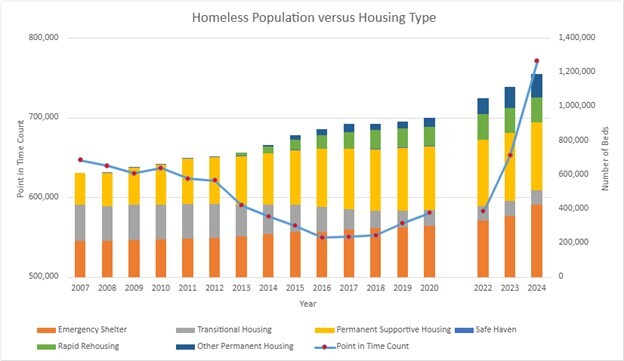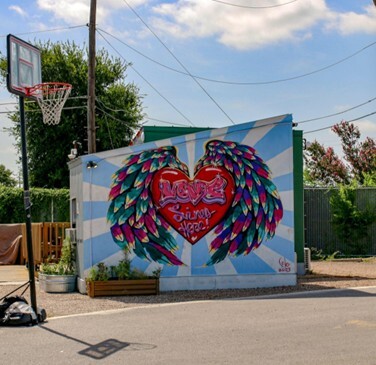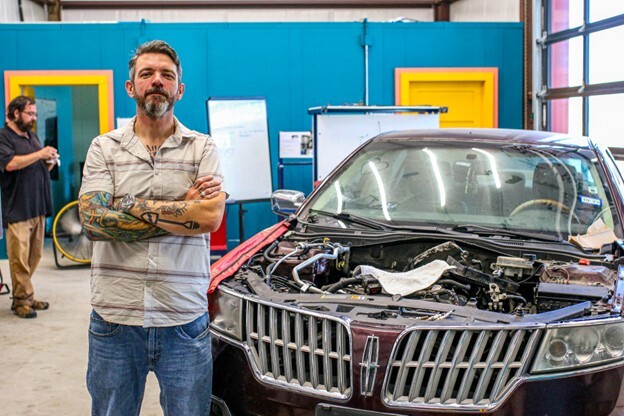AUSTIN—Treat people like they can’t take care of themselves, and they’ll start to believe it—that’s the lesson Chris Baker, founder of The Other Ones (TOO), has learned. His non-profit work program for the homeless handed out free bus passes and cell phones to the workers it was helping. The problem was that these donations kept getting lost. Baker found the same people coming back to ask for replacements.
The problem wasn’t laziness or stupidity—it was a system that failed to incentivize any sense of personal responsibility. Baker realized that the solution to this problem was as easy as requiring a small upfront payment for the items—not to cover costs, but to help workers see the value of their labor.
Today, Esperanza Community, an emergency shelter and resource center launched by The Other Ones, subscribes to that same philosophy that is helping the homeless take ownership over their lives and careers.
As the national homeless population continues to rise, housing options expand to meet that need, but such rapid growth is only sustainable for so long. Recent efforts by the Trump administration focus on investing into the places that target the root of these issues.

National Homeless Data (Credit: Texas Public Policy Foundation)
At Esperanza, resources are already being poured into the solutions that best address the needs of their community. Something as simple as an ice machine can save hours and drastically improve quality of life for the homeless. Baker says the community at Esperanza includes some of the hardest working people he knows, and they can easily harness this work-ethic when they’re just given the opportunity to flourish.
“It’s amazing what people are capable of when they aren’t spending the majority of their time on basic survival needs” Baker says.
A mural artist named Cole is one such example. Arriving at Esperanza, he was offered the chance to engage with one of their trade workshop programs. He expressed an interest in artwork, and began to refine his craft over time. First decorating the surrounding campus with murals of his own, today he’s sold a piece for $30,000. Esperanza offers a wide variety of instructive classes, equipping their residents to become artists, mechanics, electricians, and more once they graduate out of the program.

Mural by Cole on a residential unit (Credit Alex Kindig)
This approach isn’t anything new. In 2002, The Bush administration launched a “Housing First” model in a well-aimed pushback against programs that had ignored major needs in the community. This turned sour when new administrations effectively changed the meaning of Housing First to Housing Only.
The Obama administration implemented a much more heavy-handed approach. Rather than equipping homeless people with the skills necessary to become self-sufficient, the homeless were made even more dependent by agencies that offered short-term solutions to a much larger problem. California, for example, spent up to $800,000 per unit on luxury condos, a project that failed to reduce the homeless population in the slightest, as their numbers continued to rise.
That’s not to say that funding doesn’t matter—local and federal regulations currently inhibit Esperanza from receiving any aid for the upcoming fiscal year—only that the money must be spent on projects that actually uplift the homeless from their circumstances.
Scott Turner, the Trump administration’s new HUD secretary, is fighting for effective care without bloated subsidies. Re-emphasizing the many needs of the homeless that go beyond housing, he is working to ensure that funds are spent in places that utilize self-sufficiency and well-being in the long run.
John Bonura, policy analyst for the Taxpayer Protection Project at Texas Public Policy Foundation, cites Trump’s recent executive order as one “that would radically change how we approach homelessness in Texas,” granting the Legislature the ability to “enact the reforms necessary to reverse the damage done by Housing First.” This order redirects funding to programs that ensure their benefactors are receiving the treatment they need for addiction and mental health issues.
Ultimately, the city of Austin—and other municipalities—must partner with the organizations that have proven their ability to get people off the streets and into places where they can thrive. Esperanza’s model can be scaled up and out, both within the city and beyond. As always, it starts with a leader who can champion the cause into something greater than its parts.
Baker’s philosophy for Esperanza is a simple one: “We’re never going to run out of people who will need a hand up. It’s amazing how far they can go if you just give them a little bit of stake in the game.”
Esperanza will continue to be a place that provides housing first, but the real magic happens when residents take advantage of the full range of resources available to them.
“We’re becoming more of a trade school with an emergency shelter attached,” Baker says. Residents leave the community with more than just a roof over their heads—they leave with dignity, purpose, and the skills to build a better future.

The Other Ones founder Chris Baker alongside a car used for trade classes. (Credit Alex Kindig)










